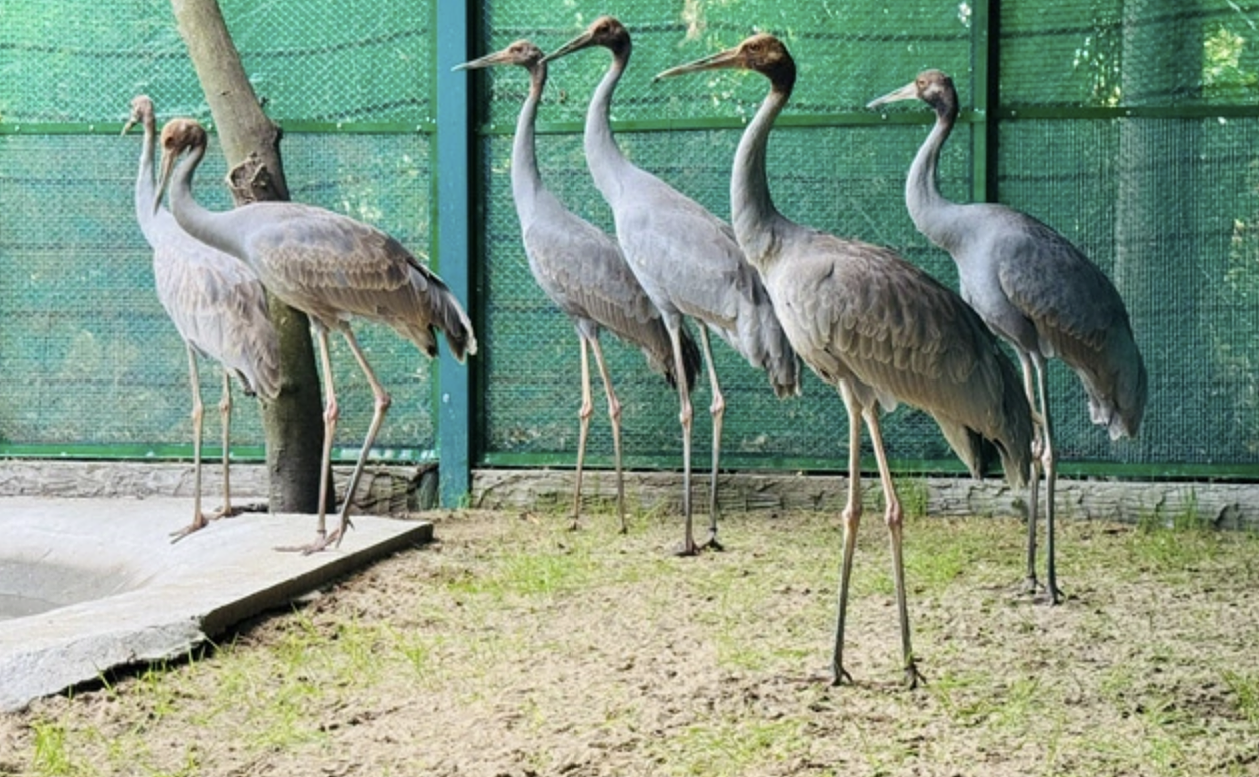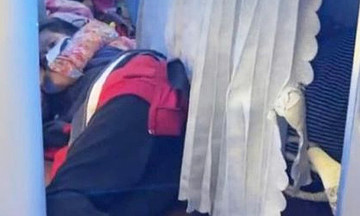"During quarantine, this crane showed limited movement and ate considerably less than the others," a representative of the Dong Thap Provincial People's Committee said on the afternoon of 18/7.
An autopsy revealed no injuries, infections, internal parasites, or digestive tract obstructions. The cause of death was determined to be general weakness leading to reduced resistance and adaptability.
The six 7-month-old sarus cranes, three male and three female, were brought to Vietnam as part of a 10-year sarus crane conservation project launched by Dong Thap province in 2022. The project aims to receive 60 cranes from Thailand and breed another 40. Of the 100 cranes to be released into the wild, the province hopes at least 50% will survive and establish a flock.
 |
The six sarus cranes in quarantine at the Saigon Zoo and Botanical Gardens after arriving from Thailand. Photo: Dong Thap Portal |
The six sarus cranes in quarantine at the Saigon Zoo and Botanical Gardens after arriving from Thailand. Photo: Dong Thap Portal
The total cost of the project, including transfer, breeding, release, and reproduction, is estimated at approximately 55 billion VND.
The five remaining cranes are healthy and adapting well in the quarantine area within Tram Chim National Park.
According to Dr. Tran Triet, a lecturer at Ho Chi Minh City University of Science, and a member of the International Crane Foundation, this is the first time adult cranes have been transported between two countries for conservation purposes.
"Previously, crane relocation usually involved eggs or short distances within a country," Triet said. He added that the journey from Thailand to Vietnam lasted over 16 hours, involving both road and air travel in hot weather, causing the cranes stress and preventing them from eating or drinking during transit.
Dr. Diana Boom, Head Veterinarian of the International Crane Foundation, noted that transporting large birds like cranes always carries significant risks. "Broken legs, wings, or neck injuries are common accidents, so we must be prepared for the worst," she said.
Sarus cranes are characterized by their bare red head and neck, and gray wings and tail feathers. Adults stand 1.5-1.8 m tall, have a wingspan of 2.2-2.5 m, and weigh 8-10 kg. They begin breeding after three years of age, typically laying only one clutch per year due to the year-long period required to raise their young.
According to the International Crane Foundation, there are approximately 15,000-20,000 sarus cranes left worldwide, with 8,000-10,000 living in India, Nepal, and Pakistan. In Indochina, they primarily reside in Vietnam and Cambodia, but their numbers have drastically declined from about 850 in 2014 to around 160 today.
Sarus cranes were once extinct in the wild in Thailand. However, since 2011, the country has implemented a breeding program. By 2020, around 100 individuals were able to reproduce in the wild.
Ngoc Tai












